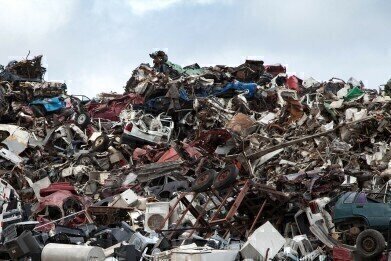Air Monitoring
Why Are Emissions Being Measured? - Odours
Dec 31 2021
When it comes to the consequences of industrial emissions, the presence of odours created by the gases might not be the first thought that springs to mind – but it certainly is among the most unpleasant. At landfills, waste management centres, wastewater treatment facilities, chemical service plants and livestock farms, the accumulation of certain substance can emit significant volumes of gas into the air, causing potent odours to contaminate the surrounding area.
On the one hand, these odours are likely to cause discomfort to the people living and working in the vicinity. However, inconvenience is not the only concern when it comes to odour management; if emissions are not adequately monitored the odours can build up to a point where they actually endanger human health. What’s more, they’re also an obvious indicator of the presence of certain gases in the environment which could have much further reaching repercussions.
Which gases and chemicals cause odours to occur?
There are a wide variety of substances which can contribute to a malodorous presence in and around an industrial facility. Some of the most common include alcohols, aldehydes, ammonia, chlorinated compounds, hydrocarbons, hydrogen sulphide, ketones, mercaptans, sulphur dioxide and other sulphurous compounds and volatile organic compounds (VOCs).
As well as causing distress to the olfactory glands of those in their vicinity, an abundance of such chemicals and gases can have a deleterious effect on the environment, as well. For example, many of the aforementioned substances, including ammonia and sulphur dioxide, to name but two, can compromise soil fertility and harm the delicate ecosystem of a particular region.
Which sites must monitor their emissions to tackle odours?
Odour management plans are now a legal requirement for all businesses which are likely to incur significant emissions of the aforementioned gases and chemicals. While the Environment Agency (EA) will treat each company on a case-by-case basis, you can expect to be required to monitor emissions if you are involved in any of the following:
- Anaerobic digestion
- Composting in open windows or vessels
- Disposal of biodegradable waste
- Incinerating animal carcasses
- Intensive farming practices
- Meat slaughtering and rendering
- Processing household, commercial or industrial waste
- Producing food or drink by cooking, heating or brewing
- Recycling materials
- Refining
- Treating clinical waste, mechanical biological substances or sewage sludge
It does not matter if these operations take place inside a sealed building or in an open-air facility. To obtain a relevant license for your activities, you must demonstrate via a management plan how you intend to reduce odours by working within your capacities, minimising storage times and quantities, restricting the use of putrescible or already putrid waste and managing all processes in a manner which minimises the generation of unpleasant smells.
The generation of odours is just one facet of emissions legislation in the UK and beyond. For a more comprehensive introduction to this fascinating subject, the upcoming virtual CEM conference next year will take a closer look at all aspects of the industry.
Digital Edition
IET 34.2 March 2024
April 2024
Gas Detection - Biogas batch fermentation system for laboratory use with automatic gas analysis in real time Water/Wastewater - Upcycling sensors for sustainable nature management - Prist...
View all digital editions
Events
Apr 30 2024 Melbourne, Australia
Apr 30 2024 Birmingham, UK
May 03 2024 Seoul, South Korea
May 05 2024 Seville, Spain
May 06 2024 Minneapolis, MN, USA


















